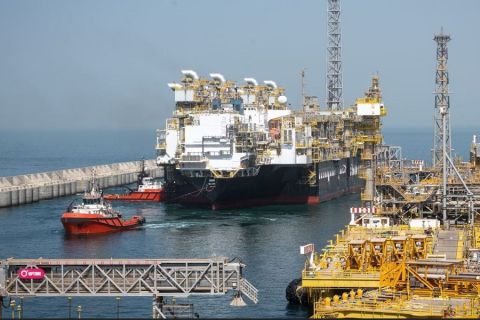
The Midland WTI American Gulf Coast futures contract established by the alliance between ICE, Magellan and Enterprise is a huge step forward for the industry, says Harold Hamm. (Source: Hart Energy)
There is an old saying that goes, “The difficult is done at once, the impossible takes a little longer.”
I’ve often looked to that saying throughout my career. In fact, at Continental we have adopted a culture of “the possible.” Pioneering horizontal drilling in the late 70s and 80s was the necessary ingredient which created the American Energy Renaissance, which led to the need to lift the archaic ban on energy exports. In 2015 we did that. I am used to taking on the daunting tasks that adversaries, and oftentimes, even friends would call impossible.
Today the industry has accomplished another one of those milestone moments with the creation of a new futures contract for the physical delivery of crude oil in the U.S. Gulf Coast. You may recall just over a year ago, April 20th to be exact, the WTI contract based out of Cushing, Oklahoma traded down to negative $37.63. It was a wake-up call to the oil industry that the storage constraints and landlocked location of the Cushing contract could no longer be ignored or tolerated.
I realized in that moment we had reached an inflection point. The benchmark on which we had relied on for decades was no longer reflective of the migration of U.S. crude oil production to the global market. I knew we needed to shift toward a benchmark that could more accurately and reliably price crude oil in America. The Gulf is the energy hub of America today. Its rapidly growing infrastructure and a naturally occurring migration of resources supports not just the U.S., but the entire world.
American Gulf Coast Select Best Practices Task Force was initiated to develop best practices specifications for a new U.S. light, sweet crude oil price benchmark in the American Gulf Coast. It was also important to advocate for its implementation and adoption as a competitive pricing point for U.S. oil markets. We think a futures contract in the most interconnected market center in the country, with a widely accepted quality spec, which settles with guaranteed delivery of crude oil is an important new alternative for the industry. The task force has worked tirelessly to create a marker with transparency and liquidity that is waterborne for this modern era.
RELATED:
PATH FORWARD: Why Harold Hamm Fought for Pricing of US Light, Sweet Crude
The Midland WTI American Gulf Coast futures contract established by the alliance between ICE, Magellan and Enterprise is a huge step forward for the industry and goes a long way to accomplishing the mission on which the task force has been working. I greatly appreciate the tireless efforts of the task force. This also would not have been possible without the dedicated members of the Domestic Energy Producers Alliance. Despite the unprecedented challenges we faced as an industry over the past year, we got the job done. As a result, our industry, our country and the world are better off for it.
This is a great day for American energy. It’s a historic day for American energy. The Gulf Coast offers near limitless storage options and represents both the domestic and international markets. Water access is imperative to making a viable market.
This new benchmark will better align where our industry is headed in the future. America reached energy independence in 2019—another one of those milestones many said would never happen—as we became a net exporter of oil and petroleum products. Our role today as an energy exporter has grown exponentially and has potential to continue to grow for the next several years. This pricing mechanism will allow us to serve the American market, exporting to global markets the highly sought-after light, sweet crude that is changing our world for the better.
Some people stop at impossible. I’m not in that camp. I know anything is possible—it may just take a little longer.
Harold Hamm is chairman of Continental Resources and founding member of the American Gulf Coast Select Best Practices Task Force Association. He also serves as chairman of the Domestic Energy Producers Alliance and co-chairman for the Council for a Secure America.
Recommended Reading
Deepwater Roundup 2024: Offshore Australasia, Surrounding Areas
2024-04-09 - Projects in Australia and Asia are progressing in part two of Hart Energy's 2024 Deepwater Roundup. Deepwater projects in Vietnam and Australia look to yield high reserves, while a project offshore Malaysia looks to will be developed by an solar panel powered FPSO.
BP: Gimi FLNG Vessel Arrival Marks GTA Project Milestone
2024-02-15 - The BP-operated Greater Tortue Ahmeyim project on the Mauritania and Senegal maritime border is expected to produce 2.3 million tonnes per annum during it’s initial phase.
TotalEnergies Acquires Eagle Ford Interest, Ups Texas NatGas Production
2024-04-08 - TotalEnergies’ 20% interest in the Eagle Ford’s Dorado Field will increase its natural gas production in Texas by 50 MMcf/d in 2024.
Help Wanted (Badly): Attracting Workers to Energy is Becoming Difficult
2024-03-27 - Attracting workers to the energy industry is becoming a difficult job, despite forecasted growth in the industry.
Tech Trends: Halliburton’s Carbon Capturing Cement Solution
2024-02-20 - Halliburton’s new CorrosaLock cement solution provides chemical resistance to CO2 and minimizes the impact of cyclic loading on the cement barrier.





